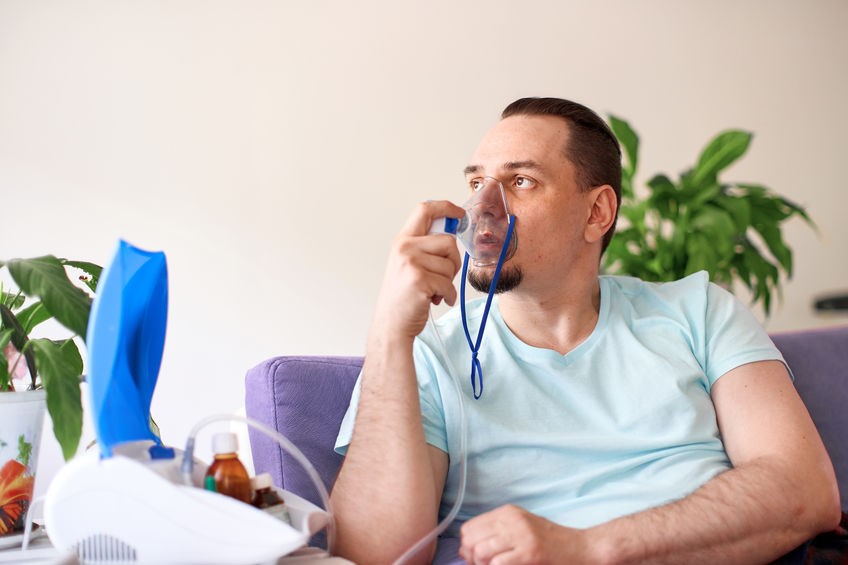Pulmonary Fibrosis is a disease that occurs when normal lung tissue is exchanged for fibrotic tissue (scar tissue) over a gradual period of time. When this process occurs, the lungs are not able to absorb much-needed oxygen. Health professionals believe that when damage occurs to the alveolar epithelial cells which line the air spaces of the lung, the body attempts to repair the damage using fibroblast, which is responsible for the fibrotic tissue. Thus, the lung tissue is no longer pliable but instead is thick and stiff, making it difficult for the lungs to expand upon inhalation.
At this time, no real answer as to what triggers pulmonary fibrosis is apparent. However, doctors have identified several risk factors which include smoking, exposure to asbestos, and some chronic infections.
Pulmonary Fibrosis seems to overlap with many connective tissue disorders, such as polymyositis and dermatomyositis, which is an inflammation of muscles and skin. Polymyositis and dermatomyositis symptoms include muscle weakness, shortness of breath, difficulty swallowing, and weight loss. Pulmonary Fibrosis is also connected with Lupus, which is inflammation of the skin, joints, and internal organs. Sjogren’s is another related disease; it affects moisture-producing glands, causing dry mouth and dry eyes. If the disease progresses, it often affects the kidneys, lungs, digestive tract, and blood vessels. Rheumatoid Arthritis is also a connective tissue disorder. It affects the synovial lining of the joints and can cause inflammation all over the body.
While there is no cure for Pulmonary Fibrosis, doctors often manage this illness with oxygen and medications such as steroids and antibiotics, which helps with inflammation. They may also prescribe Azathioprine, CellCept, and Cyclophosphamide, which suppress the immune system and reduce inflammation, along with Nintedanib and Pirfenidone, which can slow down the rate of scarring in lung tissue.
Receiving this diagnosis can be overwhelming because of its grim prognosis; however, your decision to make certain lifestyle changes can go a long way in hindering the progression of this disease.
1. Stop smoking: This does not need further explanation.
2. Exercise: Your pulmonary specialist can guide you as to which exercises will help strengthen your lungs, such as aerobic and deep breathing exercises
3. Dwell in a pollution free environment: Install an air purifier to keep your home free of particles that might irritate the lungs and a humidifier to keep moisture in the air. These devices will decrease the chance of a dry cough tremendously
4. Reduce inflammation: Choosing to limit the amount of inflammation that your body is exposed to is key to limiting the progression of this disease. Proper rest and a diet that is free from sugars, meat, and processed food are important. A diet high in fruits and vegetables helps to bind particles that cause inflammation and can limit congestion in the lungs.
While some natural remedies help with congestion, such as parsley tea, thyme tea, onion and honey tea, ginger tea, and laurel tea, because of the seriousness of this disease you should discuss home remedies with your physician before using them.







